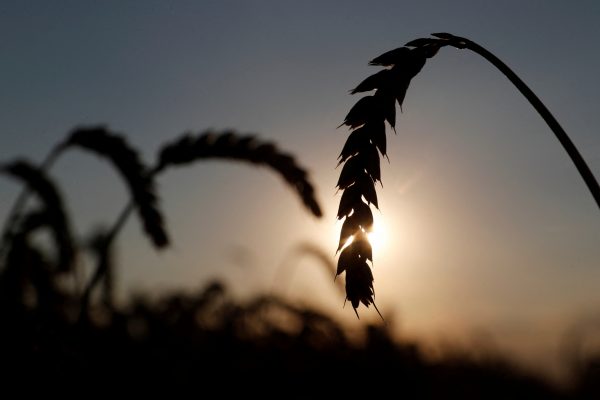It is too soon to know the full impact on Ukrainian grain supplies and infrastructure from the Russian onslaught, on the prospects for a reasonably normal winter wheat harvest, and then spring planting of wheat, corn, sunflowers and other commodity staples for which Ukraine is a significant exporter. The country is known as ‘the breadbasket of Europe’ for a reason.
But what is clear is that the world food economy is on the verge of another major crisis, perhaps as disruptive as the one in 2007–08. Important lessons were learned from the last food crisis, and avoiding those mistakes will be critical to keeping the region’s food economies reasonably stable this time. How the developing countries of Asia will fare as food supplies tighten is a special interest to Australia.
World grain markets are seeking direction. Africa is already suffering from losing access to Ukrainian wheat. Maize and barley exports to China have been disrupted. An already tight oilseeds market is now threatened by the loss of Ukrainian sunflower seed oil. India has asked Indonesia to ease its restrictions on palm oil exports.
Prices for wheat on futures markets had risen in anticipation of the Russian invasion of Ukraine, and prices were already high because of supply chain disruptions caused by COVID-19. But there has been no sustained spike since the war started on 24 February 2022. Prices are high and volatile, with wheat futures prices trading both up and down the daily limits since the war erupted.
If a crisis actually materialises, there will be serious short and long-term repercussions in developing Asia Pacific countries.
Some of the short-term consequences are already in play. Modern agriculture is heavily dependent on energy inputs, both directly as fuel for farm equipment, and also to power the supply chains for farm inputs and output. Just as important is the dependence of high-yield cereal production on synthetic nitrogen fertilisers — natural gas plus electricity plus capital-intensive machinery equals urea. Vaclav Smil calculates that a third of the world’s population depends directly on the cereals produced with this urea and other synthetic nitrogen fertilisers.
High energy prices mean high fertiliser prices, lower applications and yields, and higher grain prices. In the short-term that means more hunger in poor countries. Even if rice prices from Asian exporters remain at their current elevated levels, there will be more hunger in Timor Leste, Laos, Cambodia, Myanmar and possibly Indonesia. Papua New Guinea and most Pacific island nations will be hit the hardest because they are highly dependent on food imports.
The longer-term consequences are possibly more troubling, but are much harder to analyse with the war still in its early stages. Historically, structural transformation in developing economies leads agriculture to decline in relative importance as the modern industrial and service sectors, mainly in urban areas, grow much faster. It has been the only sustainable pathway out of poverty. Any forces that slow this process, or even bring it to a halt, also slow or halt the reduction of poverty and hunger. These forces can be internal, such as hostile political environments, or external shocks, such as wars and food crises.
The sharply higher rural–urban terms of trade brought about by food crises significantly slow structural transformation. More agricultural workers remain on the farm, with fewer moving to more productive jobs off the farm or in urban areas. Rural poverty increases, agricultural productivity stagnates, and the country remains mired in poverty. Much of sub-Saharan Africa is caught in this trap, and a number of Asia Pacific countries remain vulnerable if the food crisis drags on.
Can anything be done now to prevent this dismal scenario from playing out? If there is anything the Western allies, or China, can do to prevent Russia from pursuing a ‘scorched earth’ campaign in Ukraine, they should try.
The most important thing is not to panic. There is enough wheat, rice and other foodstuffs in warehouses around the world or awaiting harvest in the northern hemisphere to ensure that no one need starve. But ‘don’t panic’ implies a level of trust in world grain markets to deliver the needed supplies in a timely manner. Such trust will depend on some degree of cooperation among participants in world rice and wheat markets.
The rice crisis in 2007–08 was caused by panicked importers, exporters and hoarding by small-scale participants along the rice supply chain. Prices spiked. Once the reality of adequate supplies was made apparent after Japan announced that two million tons of US long grain rice would be available for re-export from Japanese storage silos on 2 June 2008, rice prices fell very quickly. The world rice market stabilised in a matter of weeks, remaining fairly stable ever since. Trust in the world rice market has been re-established, at least among most Asian participants. ASEAN has played a surprising role in establishing and maintaining this trust.
Full and detailed accounting of current grain supplies by major exporters would go a long way toward preventing a repeat of the 2007–08 price panic. A pledge from these exporters to allocate supplies to customers most in need would eliminate importers’ fears, build trust, and stabilise the world grain economy. If the Ukraine war ends reasonably soon without destroying its farms and grain marketing infrastructure, a world food crisis can be avoided.
Dr Peter Timmer is Thomas D. Cabot Emeritus Professor of Development Studies at Harvard University.

